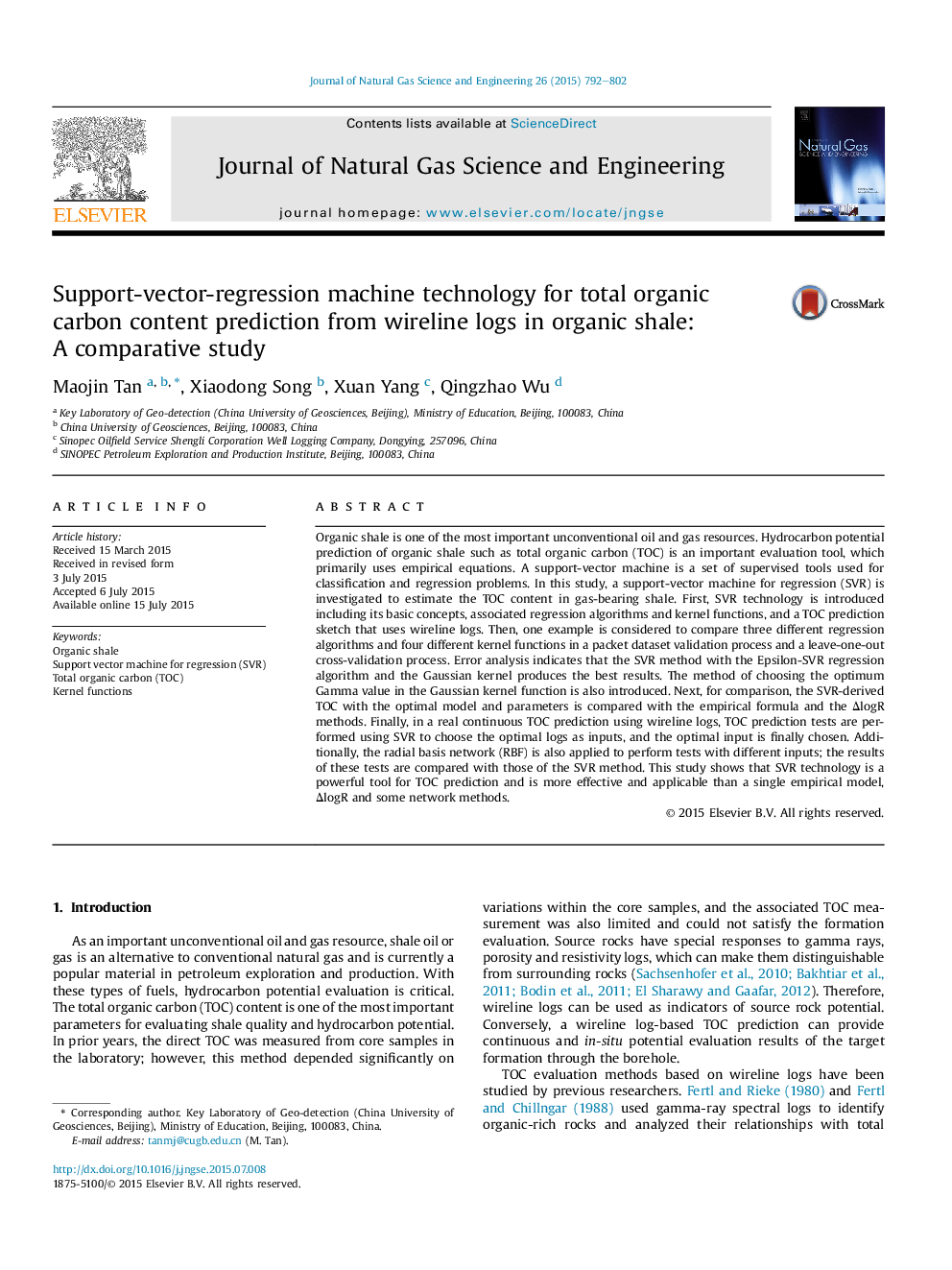| Article ID | Journal | Published Year | Pages | File Type |
|---|---|---|---|---|
| 1757571 | Journal of Natural Gas Science and Engineering | 2015 | 11 Pages |
Abstract
Organic shale is one of the most important unconventional oil and gas resources. Hydrocarbon potential prediction of organic shale such as total organic carbon (TOC) is an important evaluation tool, which primarily uses empirical equations. A support-vector machine is a set of supervised tools used for classification and regression problems. In this study, a support-vector machine for regression (SVR) is investigated to estimate the TOC content in gas-bearing shale. First, SVR technology is introduced including its basic concepts, associated regression algorithms and kernel functions, and a TOC prediction sketch that uses wireline logs. Then, one example is considered to compare three different regression algorithms and four different kernel functions in a packet dataset validation process and a leave-one-out cross-validation process. Error analysis indicates that the SVR method with the Epsilon-SVR regression algorithm and the Gaussian kernel produces the best results. The method of choosing the optimum Gamma value in the Gaussian kernel function is also introduced. Next, for comparison, the SVR-derived TOC with the optimal model and parameters is compared with the empirical formula and the ÎlogR methods. Finally, in a real continuous TOC prediction using wireline logs, TOC prediction tests are performed using SVR to choose the optimal logs as inputs, and the optimal input is finally chosen. Additionally, the radial basis network (RBF) is also applied to perform tests with different inputs; the results of these tests are compared with those of the SVR method. This study shows that SVR technology is a powerful tool for TOC prediction and is more effective and applicable than a single empirical model, ÎlogR and some network methods.
Related Topics
Physical Sciences and Engineering
Earth and Planetary Sciences
Earth and Planetary Sciences (General)
Authors
Maojin Tan, Xiaodong Song, Xuan Yang, Qingzhao Wu,
